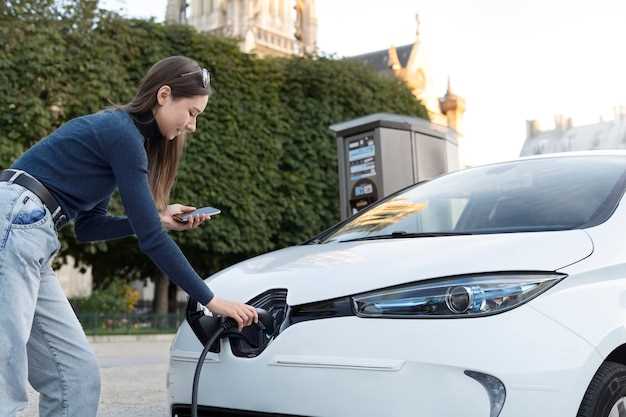
As the automotive industry continues to evolve, plug-in hybrid vehicles (PHEVs) are gaining significant traction among environmentally conscious consumers. Among these, Jeep has entered the scene with its range of PHEV offerings, aiming to deliver both performance and sustainability. This unique blend presents an intriguing option for those who seek the rugged capabilities of a Jeep while also being mindful of fuel economy and emissions.
Evaluating the value of plug-in hybrid Jeeps requires a thorough analysis of their hybrid technology, off-road capability, and overall cost-effectiveness. With the ability to charge their batteries from an external power source, these vehicles can operate solely on electric power for short commutes, thus reducing fuel consumption significantly. However, potential buyers must also consider the performance characteristics and versatility that Jeep traditionally offers, particularly in off-road situations.
As we delve deeper into the benefits and drawbacks of owning a Jeep PHEV, it becomes clear that this segment challenges the conventional definitions of both hybrid vehicles and adventure-ready SUVs. Are these vehicles merely a compromise between ecological responsibility and the ruggedness expected from a Jeep, or do they stand as a new paradigm in the automotive landscape? This article will explore these questions and provide a detailed assessment of the value offered by plug-in hybrid Jeeps.
Cost-Benefit Analysis of Owning a PHEV Jeep
Owning a Plug-in Hybrid Electric Vehicle (PHEV) Jeep presents numerous advantages and some challenges, making a cost-benefit analysis essential for potential buyers. One of the primary benefits is the eco-friendly nature of PHEV technology. By utilizing both electric power and a gasoline engine, these vehicles significantly reduce emissions compared to traditional combustion engine SUVs. This attribute appeals to environmentally conscious consumers and those looking to minimize their carbon footprint.
The initial purchase price of a PHEV Jeep may be higher than that of a standard Jeep, but potential savings come into play with fuel consumption. With the ability to drive short distances using only electricity, owners can save significantly on fuel costs. Additionally, many regions offer incentives such as tax credits and rebates for purchasing eco-friendly vehicles, further offsetting the initial investment.
Maintenance costs for PHEV Jeeps can also be lower in the long run. The electric motor generally requires less upkeep than a gasoline engine, leading to fewer repairs and less frequent oil changes. Moreover, regenerative braking systems can extend the lifespan of brake components, contributing to overall savings.
However, one must consider charging infrastructure. While home charging is typically convenient, public charging stations can be less accessible, particularly in rural areas. This can impact the usability of the vehicle for long trips. Additionally, the battery’s lifespan and replacement costs should not be overlooked, as this could represent a significant expense after several years of ownership.
Overall, the cost-benefit analysis of owning a PHEV Jeep highlights its eco-friendly advantages and potential long-term savings in fuel and maintenance. Despite some initial financial challenges and infrastructure considerations, the growing trend towards sustainability makes a PHEV Jeep a valuable investment for those focused on both functionality and environmental responsibility.
Understanding Charging Infrastructure for Jeep PHEVs
The charging infrastructure for Jeep plug-in hybrid electric vehicles (PHEVs) plays a crucial role in promoting eco-friendly driving. These vehicles combine traditional gasoline engines with electric power, allowing for greater flexibility and reduced emissions. To fully benefit from the eco-friendly advantages, an efficient charging network is essential.
Charging options for Jeep PHEVs generally include home charging stations and public charging points. Home charging is often the most convenient, allowing owners to plug in their vehicles overnight. Installing a Level 2 home charger can significantly decrease charging time compared to standard household outlets. This setup encourages daily electric driving, reducing the reliance on gasoline.
Public charging stations are increasingly becoming available in urban areas, along highways, and at shopping centers. These stations are equipped with fast chargers that can quickly replenish a PHEV’s battery during longer trips. Utilizing apps or navigation systems, Jeep PHEV owners can locate nearby charging facilities, ensuring peace of mind on the road.
Many Jeep PHEVs also come with features that optimize charging, such as scheduled charging and energy management systems. These features help drivers take advantage of off-peak electricity rates, making their eco-friendly driving even more cost-effective. Overall, a robust charging infrastructure supports the growing interest in Jeep PHEVs and enhances their appeal as an environmentally conscious choice.
Performance and Range Comparisons: PHEV Jeep vs. Traditional Models
Plug-in Hybrid Electric Vehicles (PHEVs) have gained popularity as eco-friendly alternatives to traditional models. When evaluating the performance and range of PHEV Jeeps versus their conventional counterparts, several factors come into play.
Performance
- Acceleration: PHEV Jeeps utilize a combination of electric motors and gasoline engines, providing instant torque for quicker acceleration compared to traditional models. This makes driving a PHEV Jeep a more responsive experience.
- Off-Road Capability: Both PHEV and traditional Jeep models are designed for rugged terrains. However, the added electric power can enhance off-road performance by offering better torque distribution, especially at low speeds.
- Driving Modes: PHEVs often come with various driving modes, allowing drivers to switch between electric-only, hybrid, and gasoline-only modes. This adaptability can improve overall driving performance depending on the conditions.
Range

- Electric Range: PHEV Jeeps typically have an electric-only driving range of approximately 20-30 miles, sufficient for short commutes and daily errands. This feature makes them appealing for eco-conscious drivers who wish to minimize fuel consumption.
- Hybrid Range: Once the electric range is depleted, PHEV Jeeps operate on gasoline, offering a total range comparable to traditional models, often exceeding 400 miles when combined.
- Charging Options: The ability to charge PHEVs at home or at public charging stations adds convenience, enabling drivers to maximize the use of electric power and reduce fuel costs.
Fuel Efficiency

- MPG Ratings: PHEV Jeeps typically outperform traditional models in terms of fuel efficiency, averaging higher miles per gallon (MPG). This aspect contributes to reduced emissions and lower overall running costs.
- Eco-Friendly Benefits: By operating in electric mode for short trips, PHEV drivers significantly lower their carbon footprint, making these vehicles more eco-friendly compared to their gasoline-only counterparts.
In conclusion, while traditional Jeep models offer proven reliability and performance, PHEV Jeeps present exciting advantages in acceleration, fuel efficiency, and eco-friendliness. The choice between the two ultimately depends on individual driving habits and environmental considerations.



